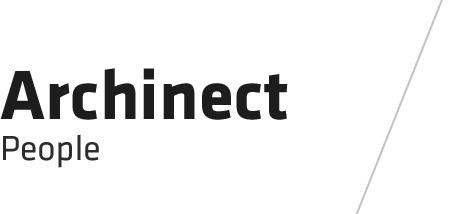
The project draws reference from Le Ricolais’s amorphous tubular structures which are a number of thin circular columns that are bundled together and subjected to compressive forces that lead to initial deformation within. As all the members work in unison, the initial failure of the material adds further structural stability to the column.
Working with this principle of deformation to create structural strength within the column, the project began with an investigation of a base cell as a hexagonal unit spanning three levels and comprising of 12 tubular members that span diagonally across each point along the hexagon. Parameters were introduced onto the base cell where by the column aperture could vary from 100% (edges of the hexagon) to 0% (towards the center) at all three levels, thus allowing for variation within each base cell.
The base cell when instantiated within an armature -an hexagonal grid, produced a field of columns which reconfigure themselves based on the deformation of the armature corresponding to programmatic variations.The deformation of the members adds stiffness within the network of columns thus adding structural stability. (a vertical column will buckle into an s-shaped when loaded --- translating into a simple sine curve. When a pre-buckled (deformed) column is subjected to additional load, it will have to buckle into tighter sine curves i.e. one s-shape becomes 2- therefore being structurally more stable) this system is visually counter intuitive which adds another level of interest within the project.
The articulation of the columns at the two ends results in the ‘floor’ and ‘skin’ formation. At the floor- the singular tubing from the column bends and acts as horizontal rebar’s that allow for different patterning systems for the floor as well as adds structural stability to the floor slab. This rebar distribution is expressed within the interior of the building demarcating the gradation of spaces.
For the skin_ a paneling system is devised that follows the logic of the base hexagonal cell. Similar to the floor treatment, the vertical members bend to form mullions to hold the panels. The aperture control of the column is translated onto the surface which results in a reticulated surface skin system.
The project proposed is an airport terminus in Bucharest, Romania. The main circulation systems within the arrival and departure concourses along with the numerous security check points creates a variation of spaces that allow for this gradation from large open spaces to smaller denser security zones. Based on these programmatic requirements, the uniform hexagonal armature distorts to accommodate the required programs. The columns therefore vary in base aperture wrt to program and level of security . Hence there is a shift in aperture of each column from arrival on the ground to departure on level one. This shift within the column aperture is accommodated within the transfer floor where the columns are more diagonal. This transfer level also takes into consideration the numerous mechanical and HVAC systems.
In conclusion the project is the culmination of a research where in a new type of structural system is introduced within a base unit and then deployed along a larger field, that has the capacity to not only have its own structural logic but also be able to produce a gradation of spaces within that respond to the programmatic needs of an airport. The deformations that are produced – both planar as well as in section, allow for the strengthening of the entire system thus enabling the use of very thin tubular members.
Status: School Project
Location: Bucharest